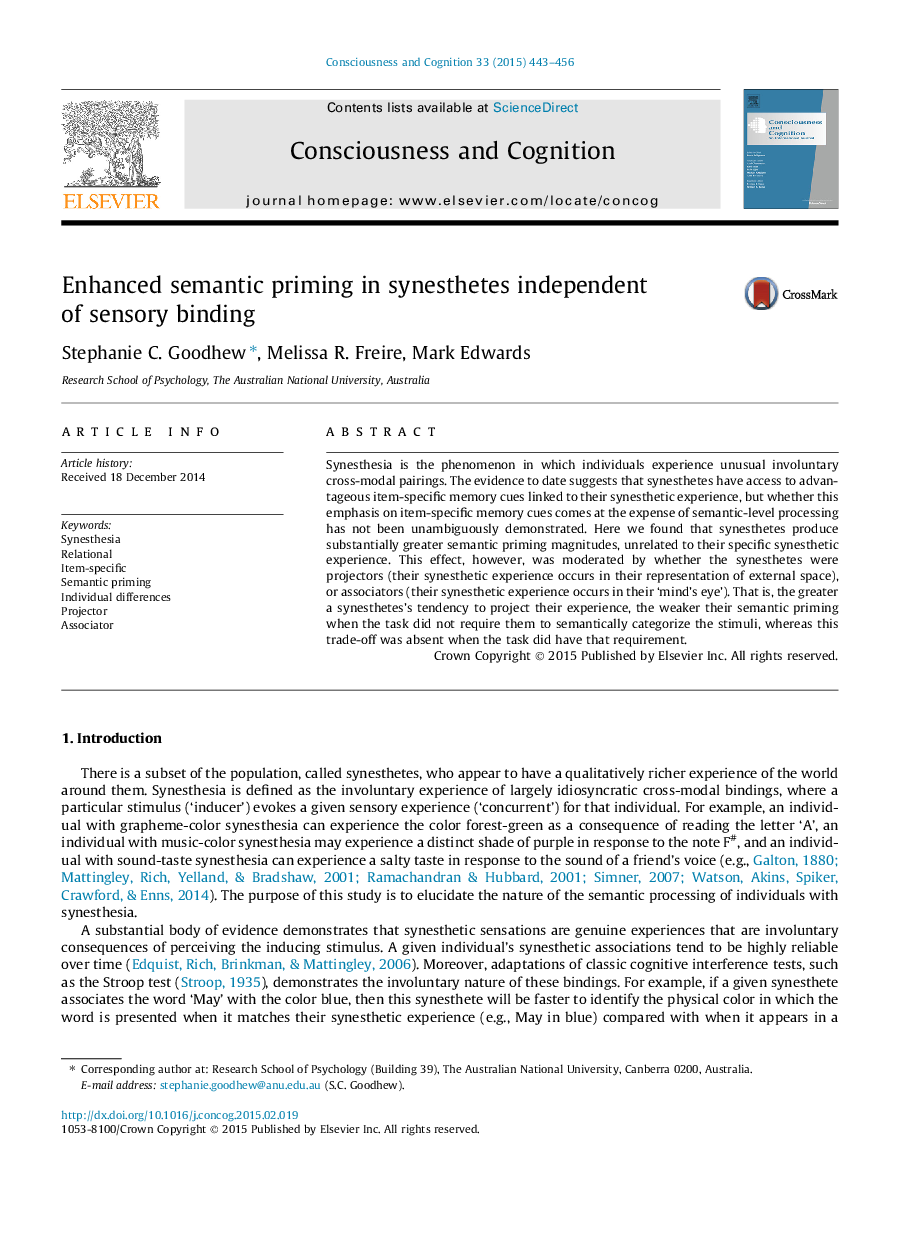| Article ID | Journal | Published Year | Pages | File Type |
|---|---|---|---|---|
| 7289630 | Consciousness and Cognition | 2015 | 14 Pages |
Abstract
Synesthesia is the phenomenon in which individuals experience unusual involuntary cross-modal pairings. The evidence to date suggests that synesthetes have access to advantageous item-specific memory cues linked to their synesthetic experience, but whether this emphasis on item-specific memory cues comes at the expense of semantic-level processing has not been unambiguously demonstrated. Here we found that synesthetes produce substantially greater semantic priming magnitudes, unrelated to their specific synesthetic experience. This effect, however, was moderated by whether the synesthetes were projectors (their synesthetic experience occurs in their representation of external space), or associators (their synesthetic experience occurs in their 'mind's eye'). That is, the greater a synesthetes's tendency to project their experience, the weaker their semantic priming when the task did not require them to semantically categorize the stimuli, whereas this trade-off was absent when the task did have that requirement.
Related Topics
Life Sciences
Neuroscience
Cognitive Neuroscience
Authors
Stephanie C. Goodhew, Melissa R. Freire, Mark Edwards,
